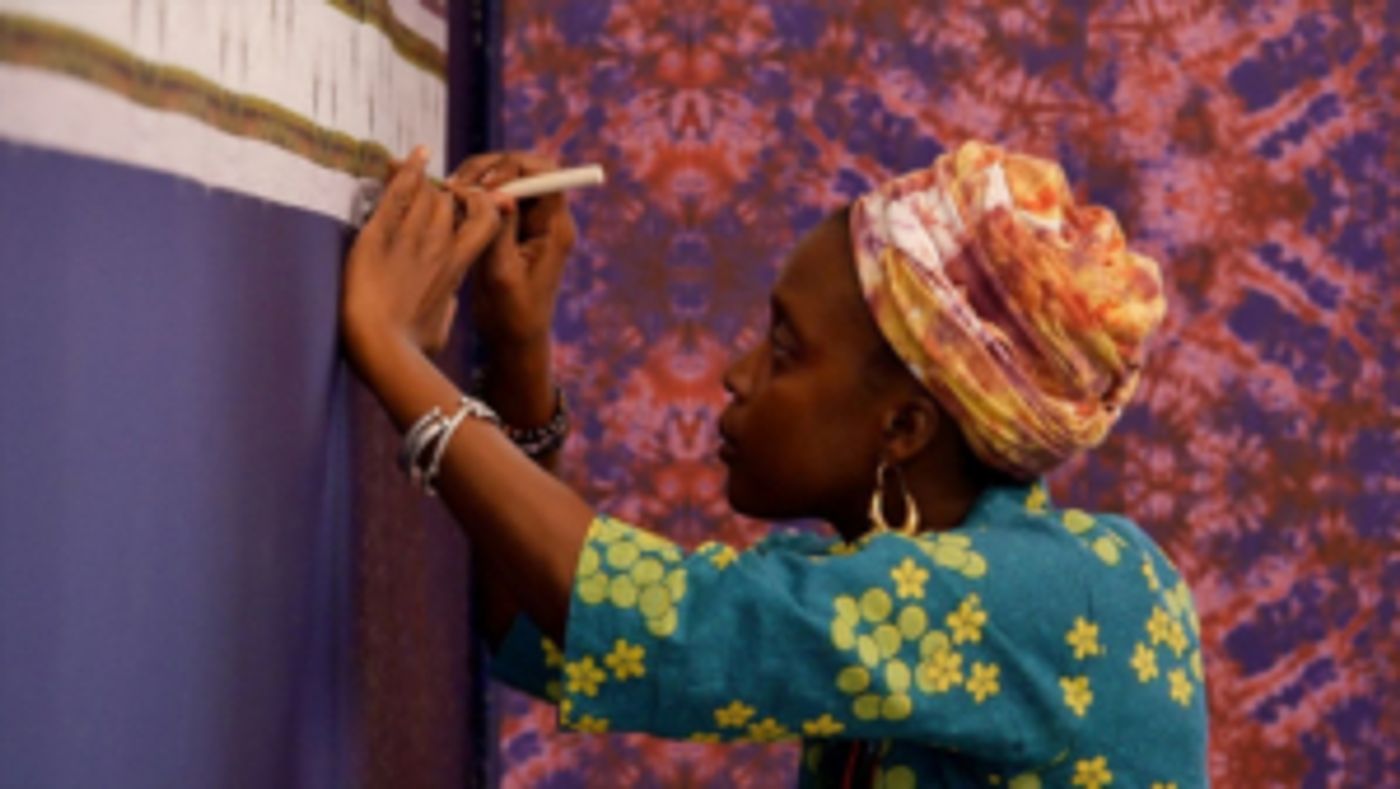Miller Theatre Unveils Lobby Installation By Adama Delphine Fawundu

Days before Miller Theatre opens its 2019-2020 season, the Brooklyn-born artist Adama Delphine Fawundu transforms Miller's lobby with a new installation, Tales from the Mano River, an extension of her research into the African water deity, Mami Wata. Made of composited images of the Mano River in West Africa, the commission is part of Columbia University's Year of Water and will be displayed throughout the 2019-20 season, from September 2019 - June 2020, greeting thousands of concertgoers as they arrive for performances.
Known for her photographic, video, and mixed media practice, Fawundu incorporates elements of biography, geography, migration, and cosmology as a way of symbolizing the individual and collective experience of the African Diaspora. This piece is made up of composited images of the Mano River, which begins in the Guinea Highlands, and connects Sierra Leone to Liberia before emptying into the Atlantic Ocean-along with traces of masked "beings," and scans of fabric handmade by Fawundu's aunt using water from the Mano River. Fawundu's ancestral home is in Sierra Leone along the Mano River where she has spent time traveling, listening to and documenting stories of family history that pre-date European colonialism in the region, and recalling memories of rebellion and resistance during British occupation. Her time in Sierra Leone, particularly on the islands of Mano and Talia, on the Mano River, provided an opportunity to connect with her family who are still there. While on the river with her family, Fawundu heard stories of Mami Wata, symbolized through the river's transformation during the wet and dry seasons with its great agricultural bounties, abundance of fish, and its connecting force as a means of transport.This year's site-specific exhibition is the seventh lobby installation commissioned by Miller Theatre. Fawundu's installation succeeds Joiri Minaya's Redecode II: La Dorada from her Tropical Surfaces series that adorned the walls last season. Previous murals were created by Lina Puerta, Tomo Mori, Scherezade Garcia, Maya Hayuk, and Vargas-Suarez Universal (see images below).
Located on Broadway at 116th Street, Miller Theatre's lobby is open to the public Monday through Friday, from 10am to 6pm, and beginning two hours before each scheduled performance.Videos
